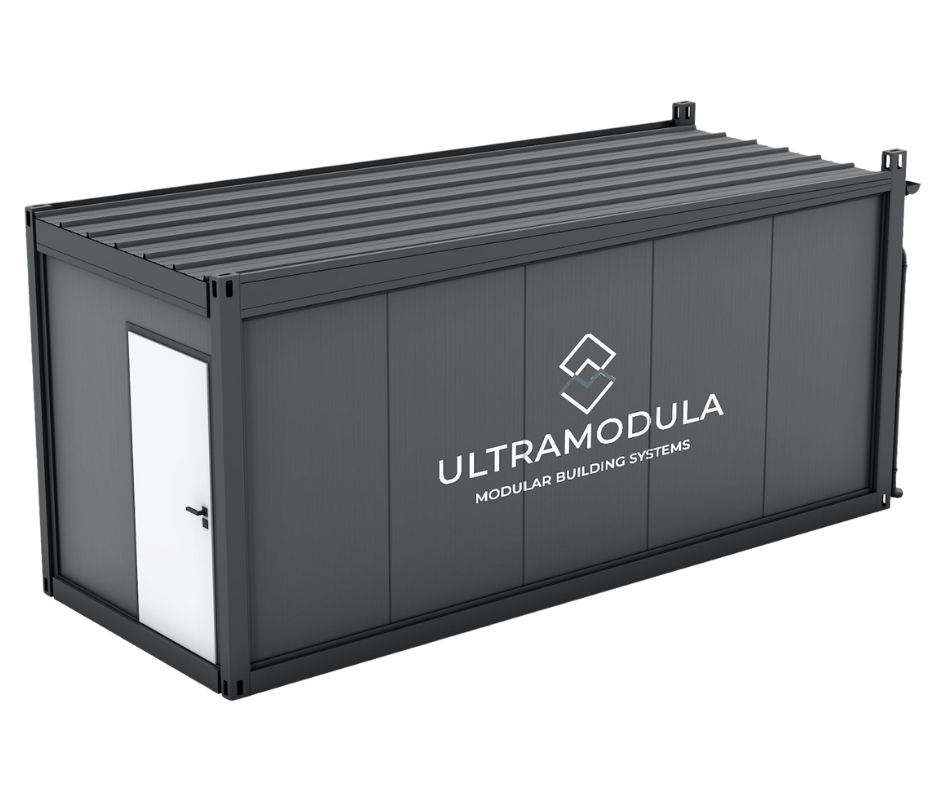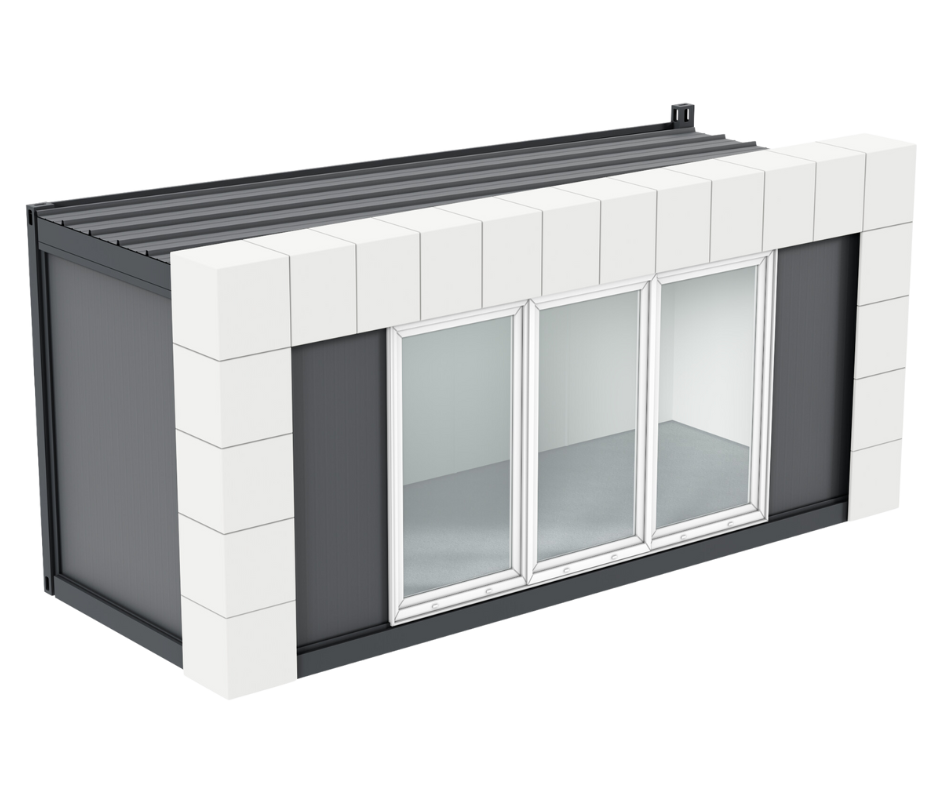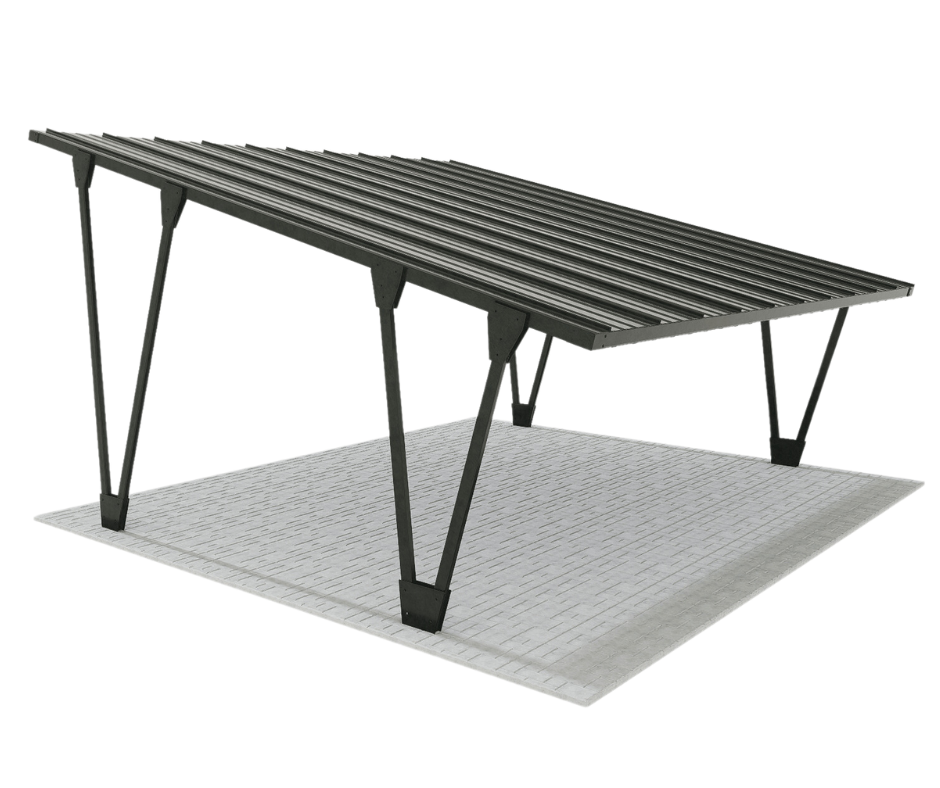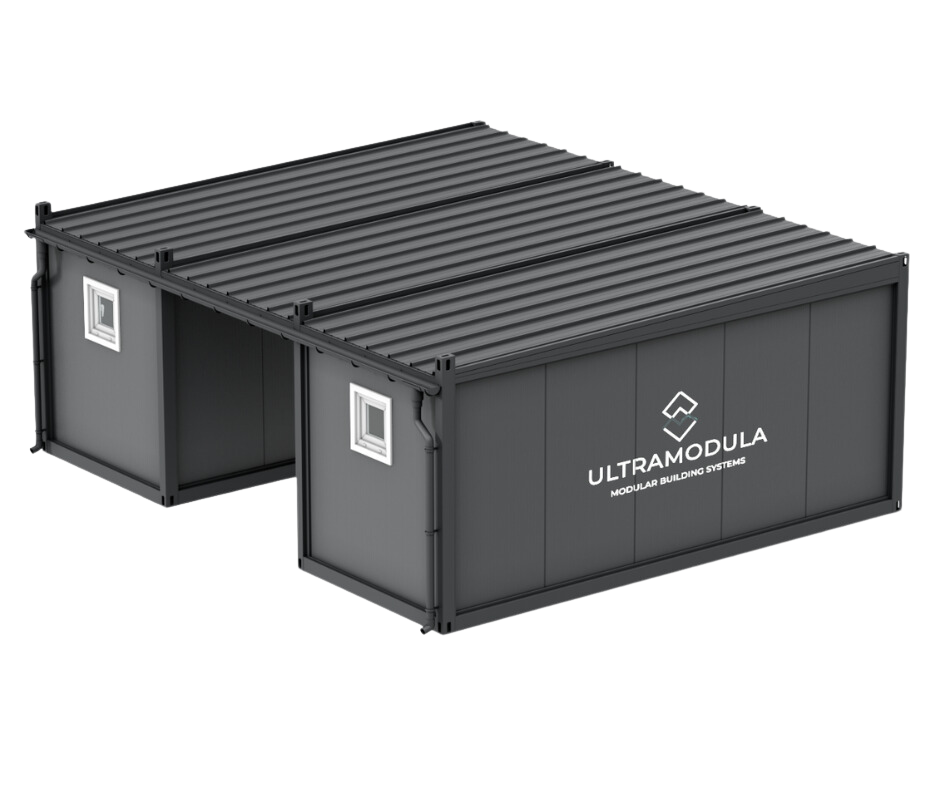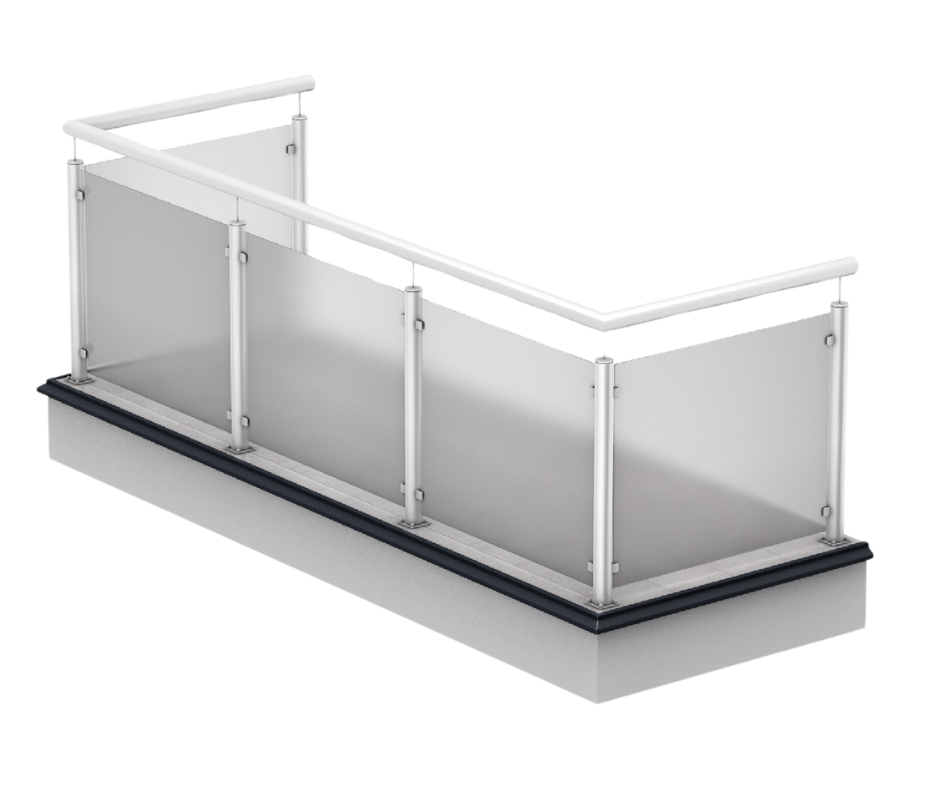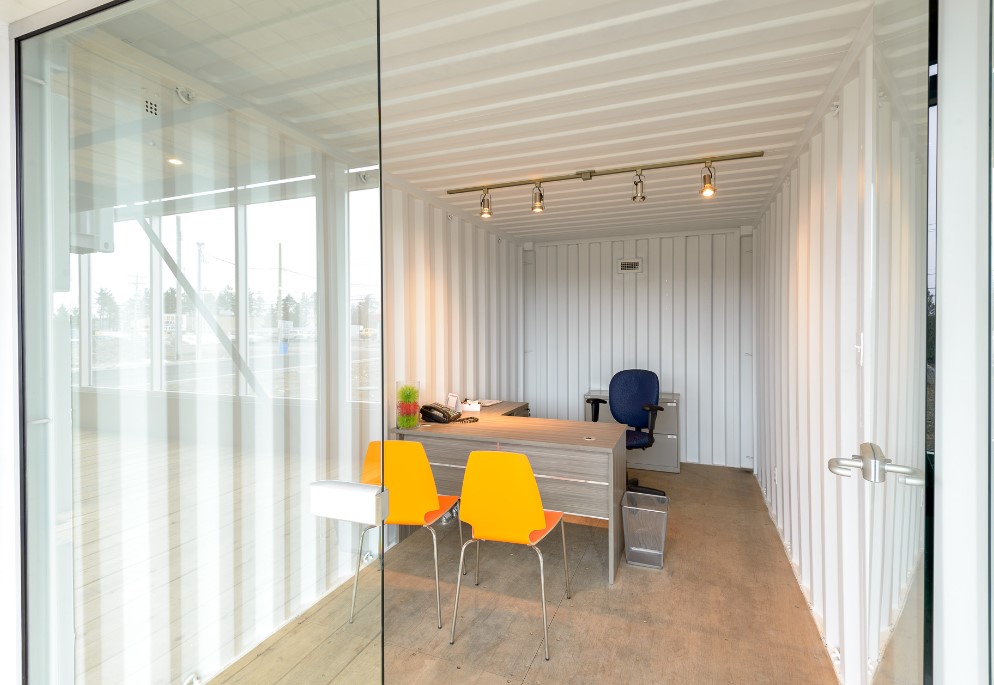Contemporary spaces office are no longer limited to traditional buildings; offices container are an innovative approach to flexible organization of work space. And due to their specific structure, they pose a unique challenge for interior designers. In this context, a comprehensive and pragmatic approach to interior design becomes crucial. The role of furniture in the functional organization of space, as well as ensuring an ergonomic working environment, cannot be overestimated and cannot be ignored in the design process.
The specificity of a container office
Container buildings as offices have some features that are different from traditional buildings. Differences from classic offices include both architectural and ergonomic aspects, which means that the design must be adapted to the specificity of the office. container. Architecturally, container offices they are characterized by an extremely simple form. Limited spaces require very meticulous furniture arrangement and effective use of every available square meter. Designers must take into account the small dimensions containers and slightly limited possibilities of dividing the space resulting from the location of windows and doors. This is a kind of challenge, especially in the context of ergonomic arrangement of workstations and separating all the necessary items in each one office zones, i.e. quiet work areas, meeting areas, or back rooms social.
An important difference is not only the dimensions of a single module, but also its design. Materials used to produce containers, such as steel, have a significant impact on, among other things, the acoustics of the interior, which in turn affects the comfort of work in the office. Analyzing these aspects is extremely important to create container office promoting employee productivity and well-being. Optimal design solutions should include, among others, the use of appropriate sound-absorbing materials, also in furniture.
Different zones, different needs
In the design of office spaces, regardless of whether they are located in containers, or in traditional buildings, the key element for functionality is the division into zones dedicated to various activities. Due to the somewhat limited space in container offices, this division and appropriate furnishing of each zone with furniture is slightly more difficult - because individual functional spaces often interpenetrate or closely connect. And each zone requires different furniture and equipment solutions.
Quiet work space
In a zone dedicated to focused work, comfortable and ergonomic furniture is extremely important so that it does not become a distraction for employees. A good solution are height-adjustable desks that allow you to work both in a sitting and standing position. This option not only ensures the highest comfort, but also supports the health of users - the sitting position is the most burdensome for the spine and prolonged sitting has a very negative impact on posture and also causes back pain. It is worth supplementing the desks with sound-absorbing panels, which improve the soundproofing of the entire space, while creating a visually closed zone for an individual employee.
An innovative, functional solution that fits perfectly into a small space container offices are so-called acoustic armchairs. These are, in fact, compact workstations with upholstered walls on at least three sides. Such boxes are equipped with a worktop, a comfortable seat, as well as integrated lighting and electrical sockets. This proposition is ideal for container offices where quiet work zones are used only for a certain part of the time, and where daily duties do not require many hours of concentrated work. They can also be a good addition to an open office space, serving as a place for longer telephone conversations without distracting colleagues.
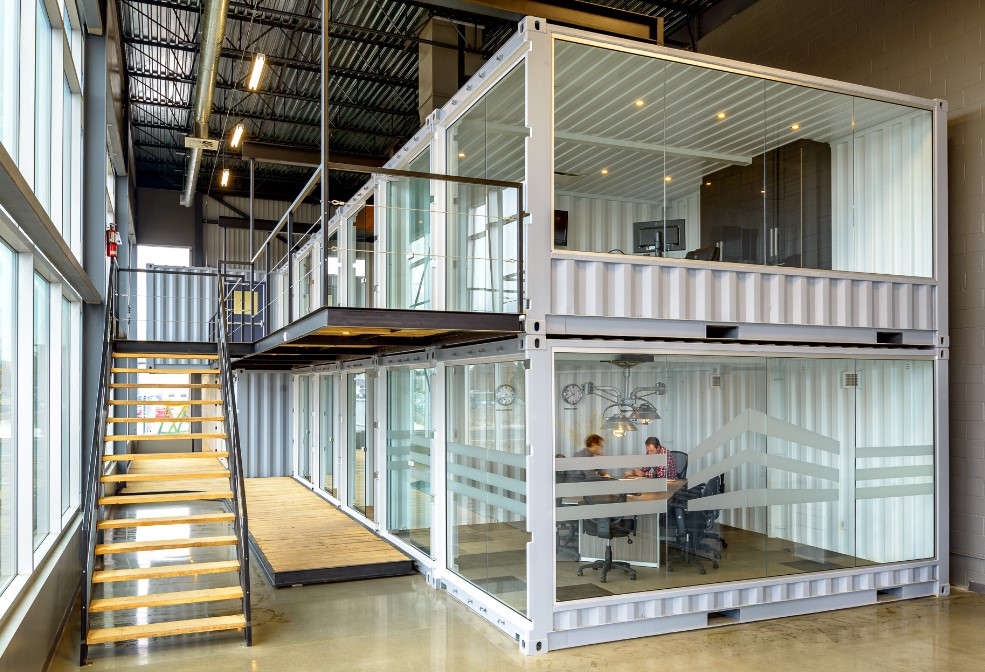
Containers office
Shared workspaces
Small rooms for creative work or open-space spaces where teams can constantly communicate are the most common teamwork zones. In such places, what matters are solutions that support and facilitate cooperation and interaction between employees. On the so-called Workbench desks, i.e. multi-station arrangements of interconnected desks, which not only allow for more workstations to be accommodated in a smaller space, but also facilitate free discussions, are perfect for "open-space" work. People working at one common desk can communicate quickly and efficiently and consult when necessary, without having to get up from their chair.
The choice of chairs is also important - it is best to choose ergonomic office chairs with a light structure, of course on wheels, because it makes it easier for employees to move to the "neighbor" sitting at the desk next to them. It is worth choosing models with a wide range of adjustment options, mechanisms supporting dynamic sitting, and equipped with a headrest, which is important for the health of the spine.
Completely different seats will be useful in rooms for creative work - soft pouffes will work great here (although they take up a lot of valuable space). A less common solution, but more interesting and more tailored to the requirements of container offices, are... special sitting balls, which can not only serve as seats in meeting places, but also as a temporary "chair" at the desk when colleagues need to consult something among themselves.
Erasable whiteboards (preferably mobile). Writing by hand unleashes creativity and supports creative processes, and writing down and drawing concepts in real time promotes effective group communication.
Social areas
Pursuant to the law, the employer is obliged to provide employees with appropriate work conditions, including by providing social facilities. In accordance with the regulation of the Ministry of Labor and Social Policy on general occupational health and safety regulations, a social facilities rooms such as dining rooms are considered. However, it is worth remembering that social areas also play an important role in creating a positive atmosphere, supporting relaxation and integration of employees. The choice of furniture for the social area is crucial in creating a space that is comfortable and actually conducive to relaxation.
Certainly the most important element of shared social spaces in everyone container office there is a kitchen. In this place, the furniture should, above all, be comfortable and functional. Ergonomic tables and chairs in the dining area allow employees to eat meals comfortably, and properly designed cabinets provide space for storing the necessary equipment. When choosing furniture, it is worth paying attention to materials that are easy to keep clean, which will make it easier to keep the dining area tidy.
Although, as is known, in containers every meter of space counts, it is worth including in functional planning even a small corner for relaxation with soft, upholstered furniture that encourages relaxation. Using comfortable sofas or armchairs, employees can recharge their batteries, regenerate and return to their duties with new energy.
Conference and training rooms
If a company decides to office built using containers needs training or conference rooms in its operations, it can easily separate them in a separate module. To make it a comfortable place, it is important to choose the right equipment: from furniture, through technical solutions to small but necessary accessories. A key element is the selection of appropriate furniture, which largely affects the comfort of users. What should you remember?
- Chairs: when choosing them, we must not forget that user comfort is a priority. The optimal solution are models equipped with adjustable armrests, ergonomically profiled backrests and seats. Additionally, the possibility of stacking (stacking one chair on top of another) is useful, which facilitates storage and organization of space.
- Conference tables. When choosing this element, it is important to take into account both their size and shape to ensure adequate space for all participants. It is worth ensuring that the tables are equipped with electrical sockets and other ports necessary for modern work.
- Cabinets for storing training materials ensure order and easy access to necessary documents and tools.
Conference rooms also require technological solutions such as projectors and video conferencing systems. Traditional options, such as flipcharts and erasable boards, will also be useful.
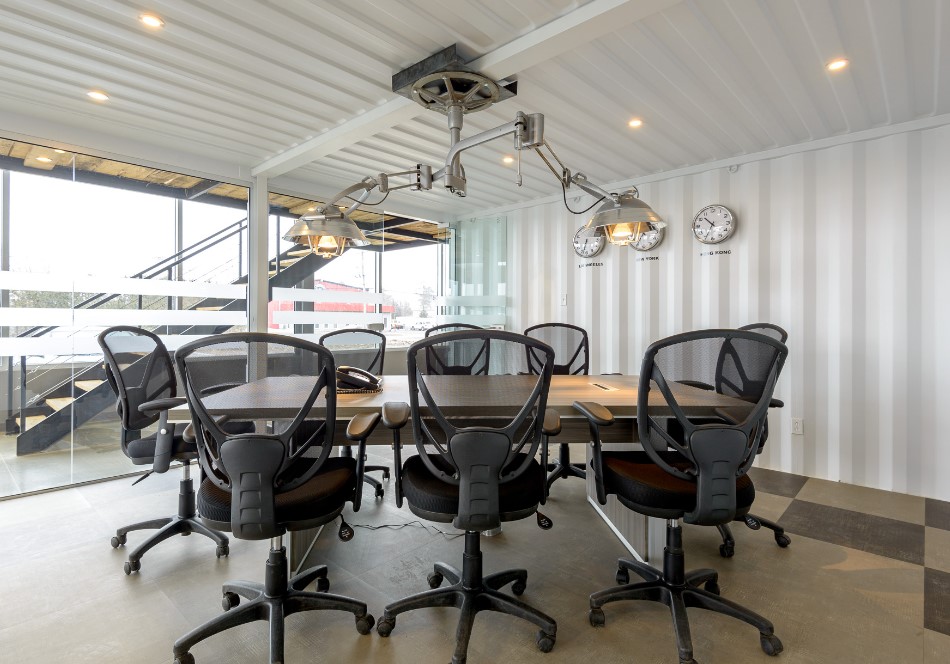
Furniture and equipment for container offices
Effective and impressive: furniture and equipment perfect for container offices
The interiors of container offices can be as effective and aesthetic as traditional offices if they are properly designed and arranged. By selecting furniture and furnishings that take into account the unique challenges of this form of architecture, you can create a space that promotes productivity, comfort and creativity. The priority is, of course, functionality, ergonomics and employee comfort - but it is also worth paying attention to the design of the selected solutions. The aesthetics of the interior influence the motivation of employees. Modern research on the psychology of the work environment confirms that properly designed and aesthetically arranged offices can significantly influence the daily work efficiency and overall team satisfaction.


